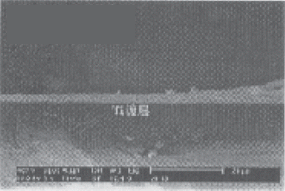
Superhard materials manufacturers at home and abroad give detailed classification, and low quality diamond abrasives may be processed through special processing, mainly used for the preparation of resin bond diamond tools.

After plating metal on the surface of diamonds, its single grain’s compressive strength is improved, and the abrasion ratio decreases at the same time, which prolongs the service life. Compared with diamond tool without plating, the plating will bring the following advantages:
A, The plating slows thermal pulse of resin bond, and the thermal conductivity of diamond plating is smaller than diamonds, so the instantaneous high temperature produced when diamond grits contacting tools, will pass on the resin through plating, thus protecting it immediately, not affected by high temperature;
B, The plating improves the bonding strength of diamond and bond. Metal plating contains diamonds, and its external parts can have good adhesion with resin bond;
C, The plating improves the crushing strength of diamond grains, and the metal plating has reinforcement effect. The plating contains ductile metals, which can help to improve the crushing strength;
D, The plating has protection effect for abrasive grains. It can prevent the outside oxygen and other harmful medium, and inhibit the graphitization of diamond crystals under the high temperature of grinding.
Superhard materials manufacturers at home and abroad give detailed classification, and low quality diamond abrasives may be processed through special processing, mainly used for the preparation of resin bond diamond tools.
For example, E6 company provides PDA433, PDA321, PDA311, PDA211 and other diamonds, which have high self-sharpening. In recent years, the developed domestic polycrystalline CSD type diamond abrasives are used for resin bond abrasive products, which significantly increase the self-sharpening of resin diamond tools.